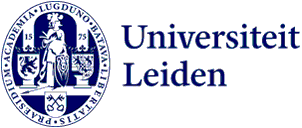
‘I use a statistical analysis to estimate my travel time by bike’
Why use Google Maps when you can also calculate your bike route based on your own data. Statistician and cyclist Alexander Dürre sees statistics in everything around him. He analyses data of soccer games and calculates the possible winners of cycling races. ‘When I have too much time, I apply statistics everywhere possible.’
‘My work at the university is very theoretical, so we usually don’t apply much,’ says Dürre. ‘As statisticians we develop theoretical properties and calculate a lot of things. That results mainly in mathematical theories. So as my hobby, I find things to apply all these statistics.’ The German assistant professor came to Leiden a year ago. ‘Before I worked with the best multivariate statisticians in Brussels.’ Now he does research and teaches at the Mathematical Institute (MI).
And that is the perfect place for him. ‘Mathematics is basically solving riddles. And I like solving riddles very much,’ he says with a big smile Especially because they build on knowledge that developed in the past 2000 years. It is either true or false. You have a theorem that will live forever and where you can built on. That’s a big difference compared to other scientific disciplines where theories exist until proven different.’

Looking at a football game from a statistical perspective
Statistics are so much of a passion that Dürre always looks for new ways to apply it. And sports are perfect for that. ‘In soccer, there is so much open data available on how the game went. There is data on where the players were at every point of the match. Our methods work perfectly to analyse the tactics behind it. We can reconstruct how the teams reacted to a goal or how a team changed its tactics.’
One of the games he analysed was Barcelona against Deportivo Alavés. ‘In the data, we saw that Barcelona was attacking all the time. This led to the opponent team to only defend at some point. They were not attacking anymore until they got one or two goals. Then they started to attack again. You could see all of thus this very nicely with statistical methods.’
Cycling from conference to conference
As an athletic man himself, Dürre also applies statistics at his own performances. ‘I cycle a lot. That way I can compare my sport performances to other cyclists and see where I can do better.’ He even has a special challenge for himself. ‘I like to cycle from one conference to another. The nicest tour was from Romania to a conference in Austria. It was very exciting because Romania is more adventure than I thought. I even saw wolves!’
To estimate the travel time from one place to the other, he uses his own data. ‘I calculate beforehand how long it would take me to cycle 150 kilometers or so. I could use Google maps, but that takes averages and doesn’t know me as well. Based on my own personal data, it is a lot more accurate.’
